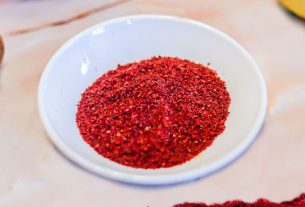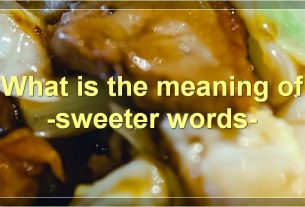Are you a cheese lover?
If so, you’re probably familiar with quesos like cheddar, mozzarella, or even Swiss.
But what about queso fresco?
This unique cheese boasts a subtle flavor that can be crumbled or melted.
But does it really melt?
Well, the answer might surprise you.
Join us as we unravel the mysteries of queso fresco’s melting capabilities and discover some delicious ways to incorporate it into your culinary creations.
does queso fresco melt
Yes, queso fresco can melt.
However, when melted, it does not become creamy and smooth like other cheeses.
It can be melted on the stove by grating or shredding it and heating it with evaporated milk in a skillet or saucepan.
It can also be melted in the microwave in 1-minute intervals until fully melted, adding milk if needed for thinning.
Some tips for melting queso fresco include using shredded or grated cheese, adding milk or evaporated milk, and cooking for a longer time if necessary.
Other Mexican cheeses, such as Oaxaca cheese and queso blanco, are also good options for melting.
Key Points:
- Queso fresco can melt, but it doesn’t become creamy like other cheeses.
- It can be melted on the stove by grating or shredding and heating with evaporated milk in a skillet or saucepan.
- It can also be melted in the microwave in 1-minute intervals, adding milk if needed.
- Tips for melting queso fresco include using shredded cheese, adding milk or evaporated milk, and cooking longer if necessary.
- Oaxaca cheese and queso blanco are other good options for melting.
- Queso fresco doesn’t melt as smoothly as other cheeses.
does queso fresco melt – Watch Video
💡
Pro Tips:
1. Queso fresco, a soft and crumbly Mexican cheese, does not melt easily when heated. This is due to its low moisture and high acidity, which prevents it from reaching a melting point like other cheeses.
2. Despite not melting, queso fresco is still commonly used in cooked dishes. It is often crumbled or grated over hot foods such as enchiladas, tacos, or grilled vegetables, where its mild and creamy flavor adds a delightful touch.
3. Queso fresco is traditionally made from raw cow’s milk, but it can also be produced using goat’s or sheep’s milk. Each type of milk imparts its unique taste and texture to the cheese, providing options for different flavor profiles.
4. Queso fresco is an excellent source of calcium, protein, and essential vitamins. Additionally, it is lower in fat and sodium compared to other cheeses, making it a healthier choice for those watching their intake.
5. In Mexico, queso fresco is frequently enjoyed in desserts and sweets as well. It is often crumbled or grated over desserts such as rice pudding, sweet bread, or even sprinkled on fresh fruits like watermelon, adding a tangy contrast to the sweetness.
1. Queso Fresco: A Fresh And Versatile Cheese
Queso fresco is a popular Mexican cheese known for its sweet, subtle, milky flavor with a hint of tang. It is a fresh cheese that can be crumbled or shredded, making it a versatile ingredient in various recipes.
Made from fresh cow’s milk, queso fresco can be used as a garnish on top of salads, soups, or fruit dishes. It can also be melted and mixed into sauces, dips, and fillings.
With its crumbly texture and unique flavor, queso fresco adds a delightful touch to any dish.
2. The Debate: Can Queso Fresco Melt?
There has been some debate about whether queso fresco can melt. Unlike other cheeses, queso fresco does not become creamy and smooth when melted. Instead, it retains its crumbly texture even after being melted. However, this does not mean that it cannot be melted at all. With the right techniques, queso fresco can be melted to create a deliciously gooey consistency that enhances the flavors of many dishes.
- Queso fresco can be melted with the right techniques.
- It does not become creamy and smooth like other cheeses when melted.
- Instead, it retains its crumbly texture.
- The melted queso fresco adds a deliciously gooey consistency to dishes.
“Queso fresco can be melted with the right techniques to create a deliciously gooey consistency that enhances the flavors of many dishes.”
3. The Ingredients And Process Of Making Queso Fresco
Queso fresco is a type of cheese that is made from fresh cow’s milk, contributing to its unique and distinctive flavor. The production of queso fresco involves curdling the milk using an acidic ingredient like vinegar or lemon juice. This process results in the separation of the milk into curds and whey. The curds are subsequently drained, pressed, and molded to create the final product, queso fresco. After this, the cheese undergoes a brief aging period before it is deemed ready for consumption.
4. Creative Uses: Crumbled Or Melted Queso Fresco
One of the fantastic qualities of queso fresco is its versatility. Whether you choose to crumble it on top of tacos, pizza, or salad, or melt it into a creamy dip, queso fresco adds a unique flavor and texture to any dish. Its crumbly texture provides a delightful contrast when sprinkled over dishes, while its ability to melt can create a rich and flavorful sauce or filling.
5. Popular Dishes With Queso Fresco As A Topping Or Filling
Queso fresco is a popular ingredient in many Mexican dishes. Its mild and tangy flavor pairs well with the vibrant flavors of Mexican cuisine. Some ways to use queso fresco include:
- Topping in dishes such as enchiladas, tacos, elote, and pizza.
- Melting and using it as a filling in quesadillas.
- Using it as a dip for chips.
Its versatility allows it to be incorporated into both savory and sweet dishes, making it a favorite amongst chefs and home cooks alike.
6. Queso Fresco’s Unique Melted Texture
When melted, queso fresco does not create the creamy and smooth texture commonly associated with melted cheeses. Instead, it maintains its crumbly nature while becoming slightly softer and more pliable. This unique melted texture adds a delightful dimension to dishes, providing a cheesy and gooey element without the heavy creaminess of other melted cheeses.
- It does not become creamy or smooth when melted
- Maintains its crumbly nature but becomes softer and more pliable
- Adds a delightful dimension to dishes
- Provides a cheesy and gooey element without heavy creaminess
“The unique melted texture of queso fresco adds a delightful and cheesy element to dishes, without the heavy creaminess of other melted cheeses.”
7. Melting Queso Fresco: Stovetop Method
To melt queso fresco on the stovetop, follow these steps:
- Begin by grating or shredding the cheese.
- In a skillet or saucepan, combine the shredded queso fresco with evaporated milk.
- Heat the mixture over low heat, continuously stirring until the cheese has melted and incorporated with the milk.
- If a thinner consistency is desired, additional milk can be added.
-
This method ensures that the queso fresco melts evenly and combines seamlessly with other ingredients.
-
Grate or shred the queso fresco.
- Combine the shredded cheese with evaporated milk in a skillet or saucepan.
- Heat and stir the mixture until the cheese has melted and incorporated.
- Add more milk for a thinner consistency, if desired.
“This method ensures that the queso fresco melts evenly and combines seamlessly with other ingredients.”
8. Melting Queso Fresco: Microwave Method
If you prefer a quicker method, queso fresco can also be melted in the microwave. Simply grate or shred the cheese and place it in a microwave-safe container. Microwave the cheese in 1-minute intervals, stirring in between each interval, until the cheese has fully melted. If the melted cheese is too thick, you can add a little bit of milk to achieve the desired consistency. This method is convenient and efficient, perfect for those who want to melt queso fresco in a hurry.
9. Addressing Concerns: Tips For Properly Melting Queso Fresco
To ensure proper melting of queso fresco, it is recommended to use shredded or grated cheese instead of larger chunks. This allows for more even and quick melting. Adding a small amount of milk or evaporated milk while melting the queso fresco can help achieve a smoother consistency. If needed, prolonging the cooking time can also enhance the desired meltiness.
10. Alternatives For Melting: Oaxaca Cheese And Queso Blanco
While queso fresco can be melted, there are other Mexican cheeses that are more suitable for melting. Oaxaca cheese, known for its stringy and melty qualities, is an excellent choice for melting. Its mild and creamy flavor makes it a great substitute for melting in dishes like quesadillas or enchiladas. Queso blanco, another Mexican cheese, is also a good option for melting. It has a slightly tangy flavor and a smooth melting texture, making it perfect for sauces or dips.
In conclusion, queso fresco can be melted despite some debate surrounding its melting capabilities. It is a versatile cheese that can be crumbled on top of various dishes or melted and incorporated into recipes. The stovetop and microwave methods are both effective ways to melt queso fresco, and proper techniques can ensure a smooth and enjoyable melt. Alternative cheeses like Oaxaca and queso blanco are also worth considering for melting purposes. So go ahead and explore the different ways to include queso fresco in your cooking, whether crumbled or melted, and enhance the flavors of your favorite dishes!
- Queso fresco can be crumbled on top of various dishes or melted
- Oaxaca cheese is an excellent choice for melting in dishes like quesadillas or enchiladas
- Queso blanco is a good option for melting, suitable for sauces or dips
💡
You may need to know these questions about does queso fresco melt
Why is my queso fresco not melting?
Queso fresco is not designed to melt due to its low moisture content and high acidity. Unlike some other cheeses, such as cheddar or mozzarella, queso fresco doesn’t contain the necessary proteins and fat to undergo the melting process. Its crumbly, firm texture remains even when exposed to heat, making it a versatile cheese that can be used for crumbling or grating in various dishes. While it may not have the same melting properties as other cheeses, queso fresco’s unique characteristics contribute to its distinct flavor and culinary applications.
Does queso fresco melt in quesadillas?
No, queso fresco does not typically melt in quesadillas. Unlike melting cheeses, queso fresco is known for its creamy texture, slight saltiness, and crumbly consistency. While it adds a delicious flavor to quesadillas, it does not undergo the same melted transformation as other types of cheese. Its unique properties make it a popular choice for topping or crumbling onto dishes rather than melting into them.
Does queso fresco melt like mozzarella?
No, queso fresco does not melt like mozzarella. While queso fresco can be softened with heat, it does not have the same melting properties as mozzarella or queso de Oaxaca. It is advisable to crumble queso fresco before adding it to your dishes.
What queso is best for melting?
When it comes to melting, Queso Oaxaca takes the crown. This soft white string cheese is renowned for its excellent melting properties. Whether you’re looking to create ooey-gooey fillings or beautifully melted toppings, Queso Oaxaca will deliver a smooth and creamy texture that is sure to please your taste buds. Its versatility and ability to melt easily make it a top choice for various recipes, and its popularity among chefs and food enthusiasts is well-deserved.
Reference source
https://www.mccormick.com/articles/food52/all-about-queso-fresco
https://www.youtube.com/watch?v=qWZG5DdUPpw
https://www.quora.com/How-do-you-melt-queso-fresco
https://www.mamalatinatips.com/2012/03/quesadillas-with-queso-fresco.html



